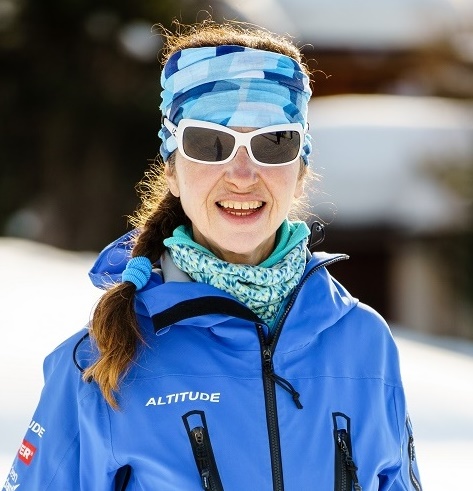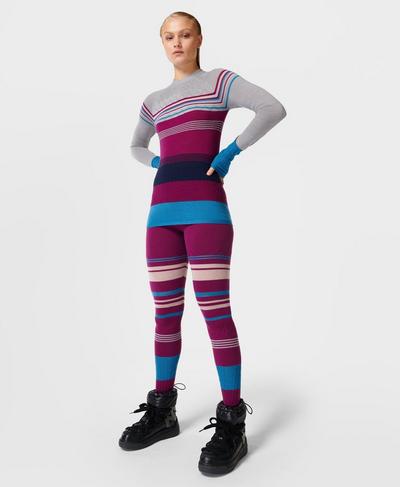How Do Merino Sheep Compare To Other Varieties Of Sheep? Merino sheep have many distinct traits that differentiate them from other breeds. Merino wool- Merino sheep are well-known for their fine wool. The wool is more soft and finer than other sheep breeds. Merino wool has been highly valued due to its warmth, versatility and ease of use.
Ability to adapt - Merino sheep are able to adapt to any climate and environments. They can thrive in both hot or cold climates and can tolerate many temperatures.
Resilience: Merino sheep are known for their tough and resilient. They are resistant to most common illnesses and can endure extreme conditions.
Fertility- Merino lambs have a high fertility rate, and can produce multiple offspring out of one pregnancy.
Merino sheep have an unusual way of grazing which helps maintain their health and well-being. They are more careful and selectively, which allows them to stay clear of overgrazing or harmful plants.
Breeding- Merino sheep are selectively bred in order to produce the finest quality wool. The result is a variety of Merino sheep breeds that have different characteristics and quality.
Merino sheep have a long tradition of being prized for their fine, flexible, resilient wool and other unique characteristics. They are an indispensable resource for the wool industry and are highly valued by farmers and breeders worldwide.
 What Is The Difference Between Long Sleeves And 3/4 Length? Zip-Neck, And Hooded Base Layers Made Of Merino?
What Is The Difference Between Long Sleeves And 3/4 Length? Zip-Neck, And Hooded Base Layers Made Of Merino? The various types of Merino wool base layers available such as 3/4 length, long sleeve as well as zip-neck, hooded and long sleeve provide different characteristics and benefits. We'll help you choose the appropriate 3/4 Length Merino base layer. These base layers offer warmth and comfort for the lower body without adding weight. The base layer can be worn with shorts or pants and is ideal for moderate to cool weather. They're an excellent choice for any activities that require a little extra warmth but don't require long-length base layers.
Long Sleeve Merino wool base layers give warmth and comfort to the upper body. They are available in different sizes and are a great option for colder weather. For activities with moderate or low intensity, long sleeves base layers are ideal.
Hooded Merino Wool base layers are designed to provide warmth and protection from the elements. They are usually paired with a fitted jacket which can be worn under helmets. Hooded bases are perfect for activities where you might be in the presence of cold and the wind.
Zip-neck Merino sheep wool base layers are designed to control temperature and provide airflow. They usually have the neckline of a zipper that is able to be opened or closed depending on the conditions of the weather. A zip-neck base layer is a good option for activities which require quick regulation of your body temperature, such high-intensity sports.
It is important to consider the weather conditions, your activity level and preferences when choosing the best Merino wool baselayer for you. Base layers of 3/4 length will be suitable for temperatures between mild and cool Long sleeves are suitable in cooler temperatures. Hooded bases layers can protect you from cold or windy conditions. Zip-neck base layer for activities that require quick temperature control. Also, you should be aware of the fit and allow for full movement. Go See the most popular
koraoutdoor.com clothing for website examples including smartwool 250 base layer womens, crane merino thermals, meriwool 400g, best woolen thermal wear, mtb merino base layer, merino blend thermals, merino base layer mens, merino midweight base layer, kari traa merino base layer, wool layering shirt, with more-
Great Suggestions For Selecting Between Yak And Merino Wool bded0_7 and
Best Advice For Picking Between Yak And Merino Wool.
 Why Is Merino Wool Mixed With Himalayan Yak Wool A Great Base Layer For Skiing?
Why Is Merino Wool Mixed With Himalayan Yak Wool A Great Base Layer For Skiing? Mixing Merino wool with Himalayan yak wool is an ideal combination to create a base layer for skiing because it combines the benefits of both fibers. Merino wool is well-known for its softness and moisture-wicking properties and also for its ability to regulate temperature and softness. Himalayan yak wool, on the other hand is renowned for its durability, warmth, and warmth. The two fibers make a base layer that is extremely warm, humid control, and breathable. This makes it ideal for skiing. The Merino wool helps regulate the body's temperature, and also wicks sweat away from your skin, keeping you dry and comfortable. Yak wool provides an additional layer of insulation that provides warmth even in cold weather. In addition, the blend of Merino wool and yak wool offers greater durability and resistance to wear and tear, making it an excellent choice for a base layer that will be used in intense sports like skiing. Merino wool mixed with Himalayan wool yak wool creates an excellent base layer to use for skiing and other cold weather activities. See Check out the top
straight from the source about best hiking base layer for more recommendations including smartwool mens leggings, merino 365 base layer, 100 percent wool long johns, columbia merino wool base layer, heaviest merino wool base layer, howies merino base layer, rei merino midweight base layer, softest merino wool base layer, women's merino 250 base layer pattern bottom, smartwool merino 150 mens, and more-
Free Ideas For Selecting Between Yak And Merino Wool and
Recommended Ideas For Selecting Between Yak And Merino Wool.
 What Other Fabrics Are Available For Yak Wool And/Or Merino Ski Clothing? Are They Superior?
What Other Fabrics Are Available For Yak Wool And/Or Merino Ski Clothing? Are They Superior? There are many choices for fabrics other that Merino wool or Himalayan-yak wool to use to make your ski clothes. However, these alternatives may not be more effective to keep you comfortable on the slopes. Below are some possible alternatives and reasons why they may not be as great. Cotton- Cotton can be used to make clothing, however it is not suitable for skiing. It is abrasive and holds moisture, which can leave you feeling cold and wet. It is also not very warm, and does not provide insulation.
Polyester-Polyester is an extremely popular synthetic fabric for ski clothing. Polyester is quick-drying and water-wicking. However, it isn't able to provide the same insulation or warmth as Merino wool. Polyester is also less permeable than natural fibers, and is more comfortable for certain.
Nylon-Nylon is a fabric made of synthetic material that is known for its strength, durability in terms of abrasion resistance, durability and durability. While it is able to be used to create ski clothing, it's not warm or insulating. In addition, nylon isn't as permeable as natural fibers like Merino wool. This can make it uncomfortable to wear for prolonged periods of time.
FleeceFleece Fleece can be used as a mid-layer fabric when skiing. It provides warmth and insulation, but not like natural fibers like Merino wool and Himalayan-yak wool. Some people also are finding fleece to be less breathable, and more prone to hold in moisture than natural fibers.
There are many other fabrics than Merino wool or Himalayan yak wool that can be used to make ski clothes. But, these materials aren't as effective at keeping you dry and warm when you're on the slopes. Merino wool, Himalayan yak wool, and other natural fibers are ideal for ski clothes. They provide superior insulation and warmth, as well as air-flow, moisture management, and warmth.